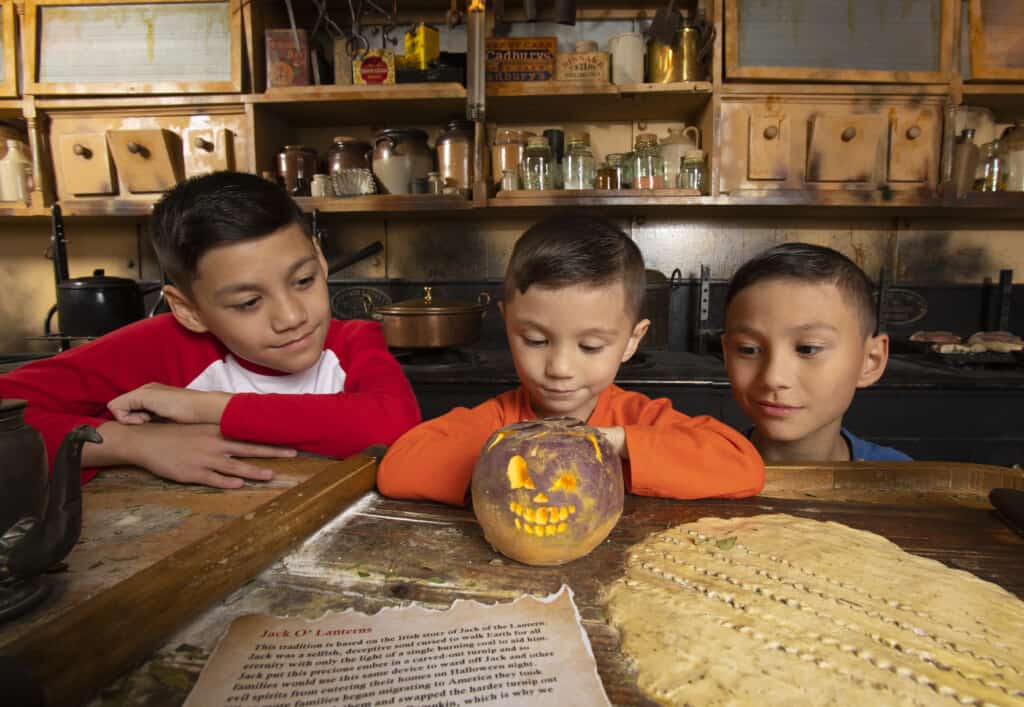The origins of the Jack O’ Lantern began centuries ago, when on one dark autumnal night the Celts would celebrate Samhain. During Samhain eve, the spirits of the dead were believed to wander the earth and interact with the living. To protect themselves from spectres who might try to harm or deceive, people would carve frightening faces into root vegetables such as beets, potatoes, and turnips, which were plentiful after the recent harvest. It was believed that displaying these totems could keep malicious spirits at bay.
Since then, the Jack O’ Lantern has evolved; along with-it stories of fear, trickery, fright, and frolic which has made it the ever-burning symbol of Halloween night that we all know today.
The name ‘Jack O’ Lantern’ partly stems from the 17th century title ‘Jack of the Lantern’. During this period, it was common to call a man whose name you didn’t know ‘Jack’. Seamen aboard ships would often be referred to by the generic name ‘Jack Tar’ for instance. The ‘Jack of the Lantern’ nickname also became popular when referring to the night watchmen on duty in towns and cities across Britain, as they changed post often and always carried a lit lantern.
During the 18th century, the cautionary Irish folktale of ‘Stingy Jack’ became established in popular culture. Jack was a rather unsavoury character with a fondness for mischief who managed to trick the Devil not once but twice! When Jack eventually died, he found himself barred from both Heaven and Hell for his deceitfulness. With just a single ember of coal in a turnip lantern he was cast off and cursed to wander between both places for eternity. This cautionary tale became intertwined with the nickname ‘Jack of the Lantern’.

The story formed part of a widely held belief particularly in the British and Irish countryside, where you would commonly find open marshland and bogs, that helped locals to explain the phenomenon known as ignis fatuus (foolish fire), also known as fairy lights and will-o’-the wisp. This is when gases from decomposing organic matter produce flickering lights. Travellers would sometimes follow these lights and get stuck in a sinkhole or bogs, leading people to believe that malicious spirits like ‘Stingy Jack’ were leading them into danger.
With increasing migration from Britain and Ireland to America these traditions were carried across the oceans on ships such as the SS Great Britain and, once settled, found their home in a new and easier to carve root vegetable, the pumpkin. Quite quickly, the pumpkin became a focus of early American literature. Stories such as Washington Irving’s ‘The Legend of Sleepy Hollow’ (1820) solidified the pumpkin’s status as a symbol of terror and fear: during Ichabod Crane’s spine-chilling encounter with the Headless Horseman, an uncarved pumpkin is ferociously thrown at the terrified schoolteacher, after which he is never seen again…
As more Americans began celebrating Halloween, and these traditions in turn travelled back across the Atlantic, the pumpkin became more and more iconic as the chief representation of the ‘Jack O’ Lantern’ and carving pumpkins is still an extremely popular Halloween past time today. Unfortunately, the humble turnip has faded from favour but if you are looking to create a smaller, more robust ‘Jack O’ Lantern’ for your celebrations this year, I would highly recommend this hardy root vegetable!
Author: Natalie Fey, Interpretation Manager
Our Terrifying Turnip Trail runs from 22 October to 6 November and is included with entry to Brunel’s SS Great Britain. Book in advance online to avoid disappointment!




